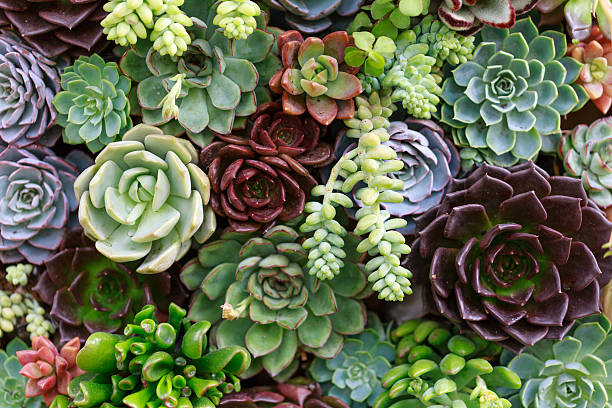
Growing succulents can be a rewarding and relatively low-maintenance gardening experience. Here are some general guidelines on how to grow succulents:
Light: Succulents typically thrive in bright light conditions. Place them in a location where they can receive at least 6 hours of indirect or filtered sunlight each day. Some succulents can tolerate direct sunlight, but be cautious of intense midday sun, as it can scorch the leaves.
Soil: Use a well-draining soil mix specifically formulated for succulents or cacti. Avoid heavy or water-retentive soils that can lead to root rot. You can also create your own soil mix by combining regular potting soil with coarse sand, perlite, or pumice to improve drainage.
Watering: Succulents have water-storing capabilities in their leaves and stems, allowing them to tolerate drought conditions. Water your succulents thoroughly but infrequently. Wait for the soil to dry out completely between watering sessions, and then water deeply until the excess water drains out from the bottom of the pot. Avoid overwatering, as it can cause root rot.
Temperature: Most succulents prefer moderate to warm temperatures, typically between 60°F (15°C) and 80°F (27°C). Protect them from frost and extreme temperature fluctuations, as they can be sensitive to cold.
Potting: Choose a pot with drainage holes to prevent waterlogged soil. Select a size that allows for some growth but is not excessively large for the plant. Repot your succulents when they outgrow their current containers or when the soil becomes depleted. Spring is usually a good time for repotting.
Fertilization: Succulents are generally low feeders and do not require frequent fertilization. You can use a balanced, water-soluble fertilizer specifically formulated for succulents or a diluted liquid fertilizer. Apply the fertilizer sparingly during the growing season, typically once every 2-4 weeks, following the package instructions.
Propagation: Succulents can be propagated through various methods such as stem cuttings, leaf cuttings, or offsets (pups). Each method has specific requirements, but in general, you'll need to allow the cuttings or pups to dry and callous for a few days before planting them in well-draining soil.
Pruning: Succulents generally require minimal pruning. However, if you notice any dead or damaged leaves or stems, you can prune them back to maintain the plant's appearance and health. Be cautious when handling succulents with spines or thorns and use gardening gloves if necessary.
Pest and Disease Control: Succulents are generally resistant to pests and diseases, but they can occasionally be susceptible to mealybugs, aphids, or fungal infections. Inspect your plants regularly for any signs of pests or disease, and take appropriate measures such as using insecticidal soap or a horticultural oil if needed.
Remember that different succulent species have specific care requirements, so it's essential to identify the specific type of succulent you are growing and research its specific needs. By providing the right growing conditions and care, you can enjoy healthy and beautiful succulents in your home or garden.

No comments:
Post a Comment